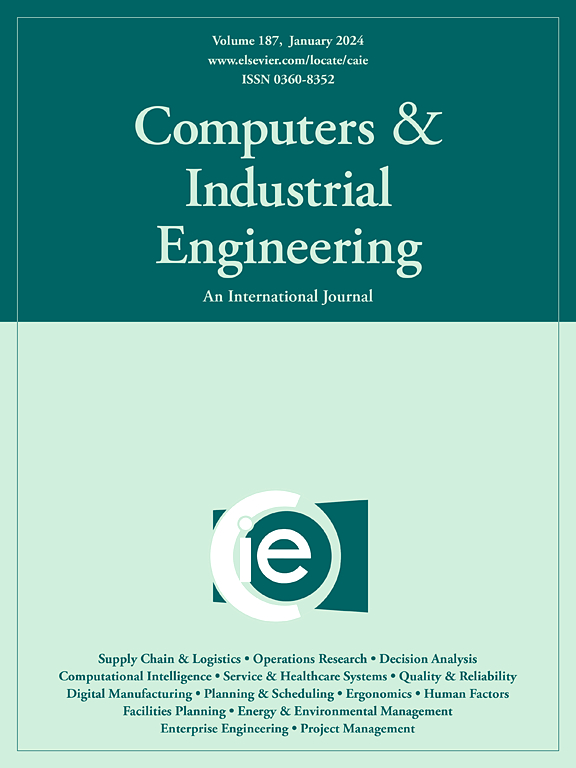Post-warranty strategies and pricing decisions in a dual-channel supply chain considering channel competition
IF 6.5
1区 工程技术
Q1 COMPUTER SCIENCE, INTERDISCIPLINARY APPLICATIONS
引用次数: 0
Abstract
Inspired by evidence regarding Gree’s superlong free-repair warranty services and considering channel competition, this study examines post-warranty strategies, i.e., providing extended or free-repair warranty services in the post-warranty period, in a single-manufacturer–single-retailer dual-channel supply chain. Based on a game-theoretical model, we optimize the warranty and pricing decisions of supply chain members under two post-warranty strategies and perform a comprehensive analysis. Some key findings are generated. First, the results show the interactive influence of the proportion of direct-channel buyers and the cost coefficient of warranty services, which are explained by the bullwhip effect and cost-benefit trade-off of warranty services. Second, by comparing supply chain members’ profits under the two post-warranty strategies, we find that whether the manufacturer should provide extended or free-repair warranty services depends on the cost coefficient of warranty services. Meanwhile, the retailer and the supply chain may suffer losses due to the manufacturer’s implementation of the optimal post-warranty strategy. Therefore, we recommend adopting transfer payment mechanisms for supply chain coordination. We further discuss single-channel scenarios and find that the manufacturer will always provide extended warranty services. This finding highlights the influence of the channel structure on the optimal post-warranty strategy and the significance of the free-repair warranty.
考虑渠道竞争的双渠道供应链保修后策略与定价决策
本研究受格力超长免修保修服务的启发,并考虑渠道竞争,考察了在单一制造商-单一零售商双渠道供应链中,在保修期后提供延长或免费保修服务的售后策略。基于博弈论模型,对两种售后策略下供应链成员的保修和定价决策进行了优化,并进行了综合分析。产生了一些关键的发现。首先,研究结果显示了直接渠道购买者比例与保修服务成本系数的交互影响,这可以用保修服务的牛鞭效应和成本效益权衡来解释。其次,通过比较两种后质保策略下供应链成员的利润,我们发现制造商是应该提供延保还是免费维修的质保服务取决于质保服务的成本系数。同时,零售商和供应链可能会因为制造商实施最优保后策略而蒙受损失。因此,我们建议采用转移支付机制进行供应链协调。我们进一步讨论了单通道场景,发现制造商总是会提供延长保修服务。这一发现突出了渠道结构对最优保后策略的影响以及免费维修保修的意义。
本文章由计算机程序翻译,如有差异,请以英文原文为准。
求助全文
约1分钟内获得全文
求助全文
来源期刊

Computers & Industrial Engineering
工程技术-工程:工业
CiteScore
12.70
自引率
12.70%
发文量
794
审稿时长
10.6 months
期刊介绍:
Computers & Industrial Engineering (CAIE) is dedicated to researchers, educators, and practitioners in industrial engineering and related fields. Pioneering the integration of computers in research, education, and practice, industrial engineering has evolved to make computers and electronic communication integral to its domain. CAIE publishes original contributions focusing on the development of novel computerized methodologies to address industrial engineering problems. It also highlights the applications of these methodologies to issues within the broader industrial engineering and associated communities. The journal actively encourages submissions that push the boundaries of fundamental theories and concepts in industrial engineering techniques.
 求助内容:
求助内容: 应助结果提醒方式:
应助结果提醒方式:


